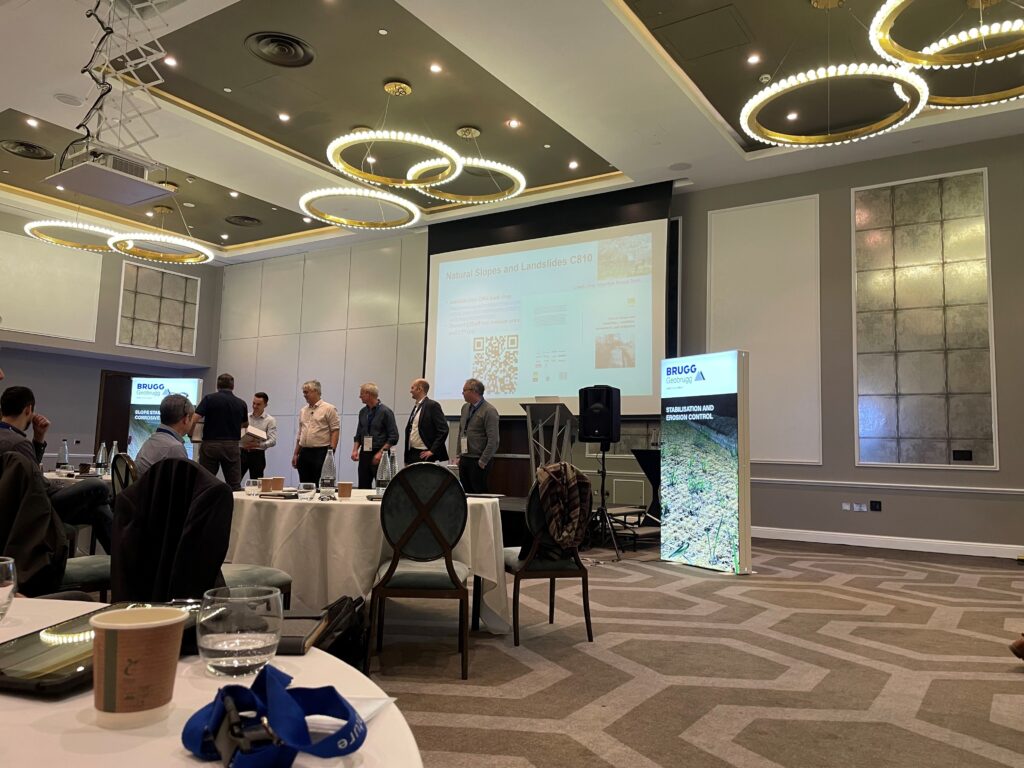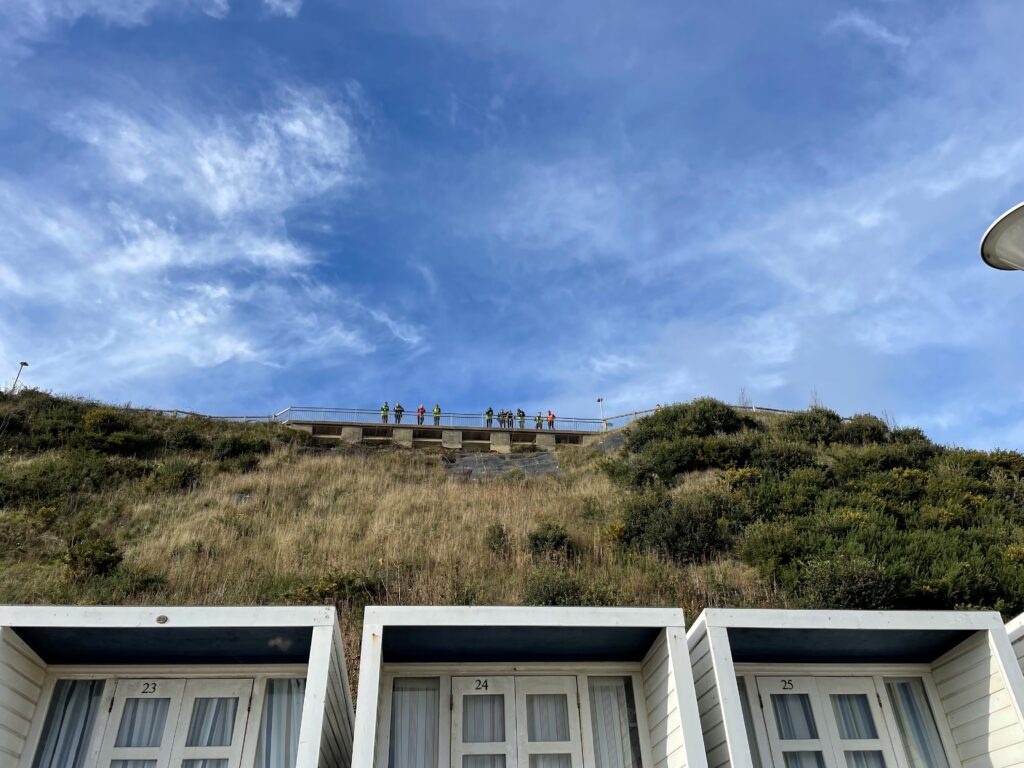
One of our senior geotechnical engineers, Rose Ashmore was a guest of #Geobrugg last week at their two-day conference on the life cycle management and environmental aspects of slope and cliff stabilisation systems. The conference was a fascinating and informative event with a range of high-profile speakers from a mix of consultancies, contractors, and local authorities. The speakers provided useful insights into the issues faced by asset owners in managing and maintaining slopes as they seek to reduce environmental impact, manage financial pressures and deal with more frequent extreme weather events. The forum provided the opportunity for sharing “lessons learnt” that can be used to provide more efficient and sustainable designs in the future.

The conference was timely as we have a number of projects that involve the assessment of slopes at the moment, both man made and natural. Also timely has been the publication of the new #CIRIA publication C810 [Natural slopes and landslides – condition, assessment, and mitigation] on natural slopes and we’re excited to have obtained an early copy. The report provides guidance on achieving a more unified approach to carrying out both quantitative and qualitative risk assessments. As consultants this should help us to provide clear recommendations to asset owners that are more comparable to risk assessments carried out for other assets, allowing them to better understand how to prioritise their budgets when managing and maintaining their assets.
At a time when many local authorities are having to balance tight budgets, it is becoming ever more important that we are able to provide good and clear advice and recommendations to our clients. One of our slope projects is for a local authority (more coming soon!). We’ve completed a ground investigation and are undertaking assessments along a large section of coastal cliffs that have a long history of instability. We are working with the client to produce remediation strategies that offer the best solutions considering aspects such as cost, design life, buildability, maintenance, and of course, sustainability. The lessons learned from the Geobrugg conference and the new CIRIA guide will assist us in evaluating a wide variety of slope stability systems and considering what combination offers the most optimum solution in terms of sustainability and cost benefit ratio.
